15 Wild Animals Deadly to Humans
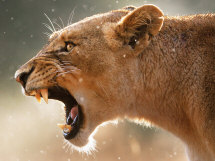 Every year, thousands of animal encounters end in death. These encounters
often involve a human becoming careless and getting too close for the animal’s
comfort. However, there have been animal attacks that were unprovoked, and
seemed to happen for no apparent reason. While some of these attacks are quite
violent others end in death within a matter of seconds, which means that most of
the time the victim has no idea what is going on. Some of the most violent
deaths caused by animals include those involving great white sharks,
hippopotamus’, African elephants, and the saltwater crocodile. Less violent
deaths have involved the Africanized honey bee, the blue ringed octopus, and the
boxed jelly fish. Every year, thousands of animal encounters end in death. These encounters
often involve a human becoming careless and getting too close for the animal’s
comfort. However, there have been animal attacks that were unprovoked, and
seemed to happen for no apparent reason. While some of these attacks are quite
violent others end in death within a matter of seconds, which means that most of
the time the victim has no idea what is going on. Some of the most violent
deaths caused by animals include those involving great white sharks,
hippopotamus’, African elephants, and the saltwater crocodile. Less violent
deaths have involved the Africanized honey bee, the blue ringed octopus, and the
boxed jelly fish.
15) Hippopotamus
When thinking of an extremely dangerous animal, few would
think of the hippopotamus. Hippopotamus’ can become quite territorial and are
the cause of hundreds of deaths every year. The hippopotamus can grow to be
around 14 feet long and can weigh around 8,000 pounds. These animals can be
found in the sub-Sahara of Africa, and can spend up to an average of 16 hours a
day in the water. One of the most likely reasons for a hippopotamus to attack is
because they feel that a human is a threat to the school that they are a part of
or because they feel the need to display dominance over the human. There are,
however, reports of hippopotamus’ that have attacked when unprovoked. These
particular instances prove that the hippopotamus is just as unpredictable as
other wild animals.
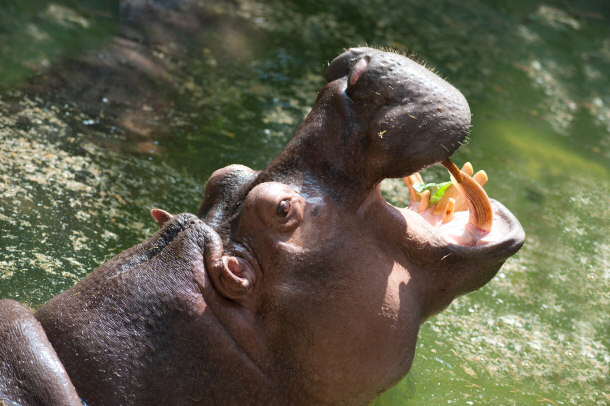
One hippopotamus attack, in particular, proved just how unpredictable these
animals can be. In November of 2011, a South African farmer, Marius Els, was
brutally attacked and killed by his pet hippo.
Farmer Marius Els Killed by his Pet Hippo
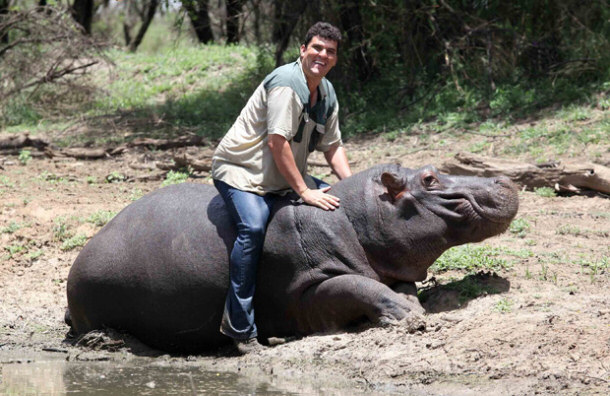
According to Daily Mail, Els had
owned and cared for the hippo for over seven years. Though the specifics of the
attack are unknown, the autopsy showed that Els had been bitten by the hippo
several times, and that he had been submerged under water for an undetermined
period of time. While Els was declared dead at the scene of the attack, it is
unknown just how long he had been dead before paramedics had arrived.
14) Great White Shark
The great white shark can typically be found in
temperate coastal areas, but can also live in the open sea. These fish can grow
to over 20 feet in length, and have been known to weigh up to 5,000 pounds.
Great white sharks have remarkable senses, 300 razor sharp teeth, and impressive
speeds that easily make them the top predator of the ocean.
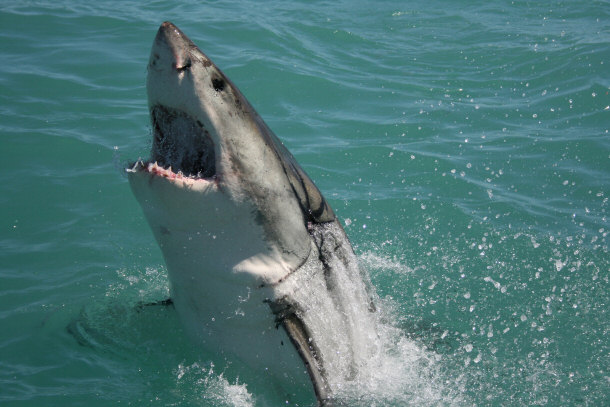
Throughout history, there have been thousands of shark attacks that have
ended in death. In February of 2013, there was a great white shark attack that
resulted in the death of Adam Strange. The attack took place in Muriwai Beach,
New Zealand while Strange was swimming. He was only about 600 feet from the
shoreline as he trained for a long distance harbor swim. With hundreds of
tourists as witnesses, Strange was viciously attacked by a great white shark
that pulled him under. The attacking great white was estimated to be about 14
feet long, and reportedly circled its victim after the initial attack. The
initial attack led to the presence of three additional great white sharks. New
Zealand police showed up to the scene in an inflatable life boat, but it was too
late to save Strange. Shots were fired, and two of the sharks dispersed, but it
still took police a couple of hours before they could recover the body from the
two sharks that remained circling Strange's body.
Another example of how gruesome a great white shark attack could be is a
attack that took place in 1985. In this particular attack, Shirley Ann Durdin
was diving in Peake Bay, Australia. While Shirley was looking for scallops, she
was attacked by a 20 foot long, great white shark. As her husband and children
watched in horror, the shark tore Shirley in half on its first strike. The only
part of her body that remained when rescuers arrived was her headless torso,
which the shark returned to devour too.
13) Carpet Viper
Found in North Africa and Asia, the carpet viper kills more
people each year than any other poisonous snake. The carpet viper is extremely
venomous, and lives in close proximity to humans. Carpet vipers are nocturnal
for the most part, and have been known to bury themselves in the sand. Unlike
most snakes, the carpet viper gives birth to live offspring.
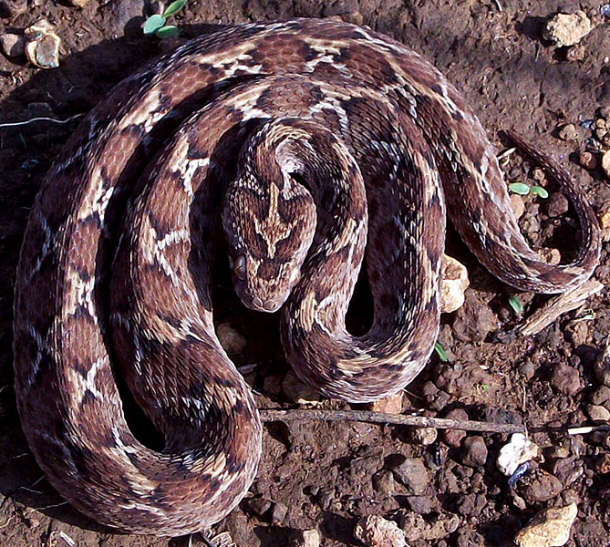
By Shantanu Kuveskar (Own work) [CC-BY-SA-3.0],
via Wikimedia Commons
Though the carpet viper usually strikes because they feel threatened, there
have been some cases of unprovoked attacks. When a carpet viper strikes, the
human will experience many different affects. Swelling, blistering, necrosis,
spontaneous bleeding, and coagulation are all side effects of a single bite. In
2008, a snake rescue worker was bit by a carpet viper while trying to rescue it.
The affects of the bite proved too much for the snake rescuer, and he was
pronounced dead two days later.
12) Africanized Honey Bee
First appearing in the United States in 1990, the
Africanized honey bee has become known for its aggressive tendencies. The
Africanized honey bee is known for attacking just because there was a noise or
vibration. In most cases, an Africanized honey bee will respond in large numbers
and in a rapid number. The venom that is injected into their victims is just as
potent as the garden variant of honey bees, and they are exceedingly hard to
tell apart.
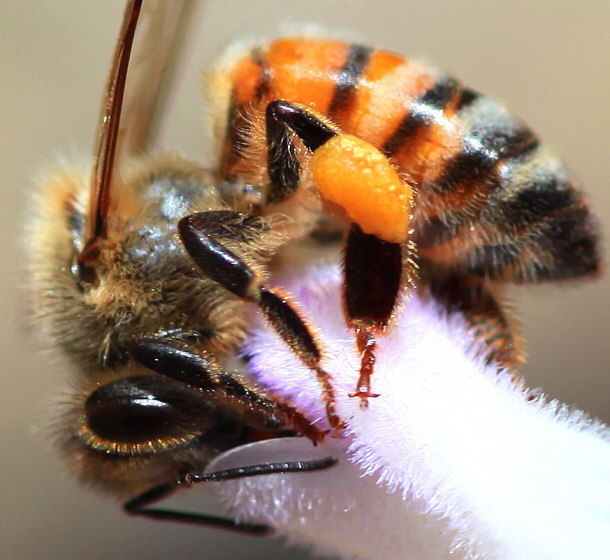
The features that make the Africanized honey bee more hazardous, is the way
that they behave. Africanized Honey bees are easier to provoke, attack in large
numbers, will stay agitated for longer periods of time. In October of 2010,
Curtis Davis, 73 year old man was stung over 100 times by a colony of
Africanized honey bees. During the attack, Curtis had been preparing land for
reconstruction. The colony, which was nearby, became frenzied and swarmed Davis.
11) Black Rhinoceros
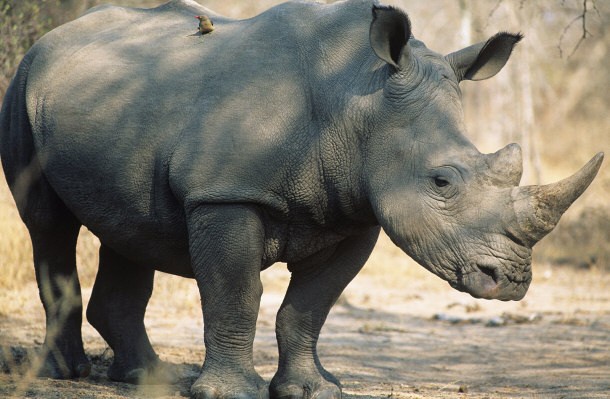
Found in Africa, the black rhinoceros lives in open
grasslands and flood plains. The black rhinoceros can grow to be about 13 feet,
and can weigh up to 5,000 pounds. Reaching up to speeds of 40 miles per hour,
the black rhinoceros can be quite formidable when agitated. The black rhino can
be extremely aggressive, and will charge at anything viewed as a threat. The
aggressiveness seems to stem from the animal's need to display dominance over
other rhinoceros. In fact, the black rhinoceros population suffers more death
from territorial fights than from any other factor. It is estimated that almost
50% of all males and over 30% of all females are killed during territorial
fights. Because of this, they have become known as an extremely dangerous animal
to be around.
One notable attack, took place in January of 2013 when Chantal Beyer and her
boyfriend were honeymooning in South Africa. During their trip to South Africa,
the couple visited the South African nature park. According to Daily Mail, the
South African guide encouraged Chantal to stand close to a small group of
rhinoceros for a picture. Moments after the picture was taken, a rhinoceros
attacked Chantal from behind. As the rhinoceros attacked, the animal punctured
Chantal’s chest from the back. The attack resulted in a collapsed lung and
broken ribs for Chantal. The attack was a costly reminder that the behavior of
these large, dangerous animals cannot be predicted.
Chantal Beyer and her boyfriend Right Before the Rhino
Attack:
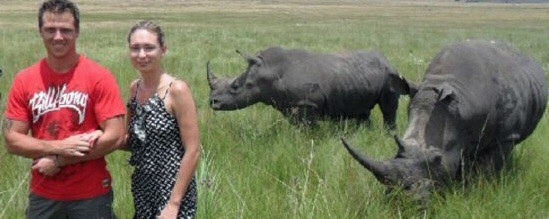
10) Blue Ringed Octopus
The Blue ringed octopus is commonly found off of the
coast of Australia in shallow waters or tide pools. The blue ringed octopus has
a lifespan of about two years. This octopus can measure at about eight inches
long, and will weigh in at around .90 oz.
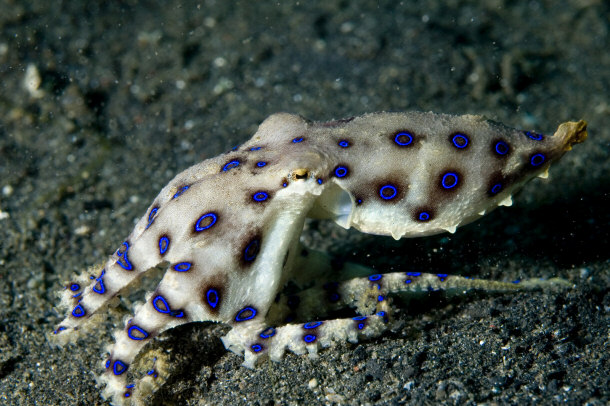
The blue ringed octopus possesses venom that is powerful enough to kill a
human within a matter of minutes. There is no real antidote for the venom as of
yet. The only option that victims have is a heart massage with artificial
respiration. This option is done in hopes of working the poison out of the
victims system. When a blue ringed octopus attack takes place, the venom is
transmitted through the octopus’ saliva, which is transferred when its beak
pierces its victims flesh. The octopus possesses a beak that is sharp enough to
cut through a wetsuit with ease. Though the blue ringed octopus is not overly
aggressive, they will become defensive if they feel threatened.
9) Stone Fish
Believed to be the deadliest fish in the world, the stone fish
is classified as a member of the scorpion fish family. The stone fish can reach
up to 35 cm in length, and is primarily found in the Australian or Indo- Pacific
regions. Along the back of the stone fish are 13 rows of venomous spines. The
stone fish gets its name for its unique ability to blend in perfectly with
surrounding rocks. It is this same ability that makes this fish so dangerous.
Stone Fish Blend in with their Environment and Look Like
Rocks
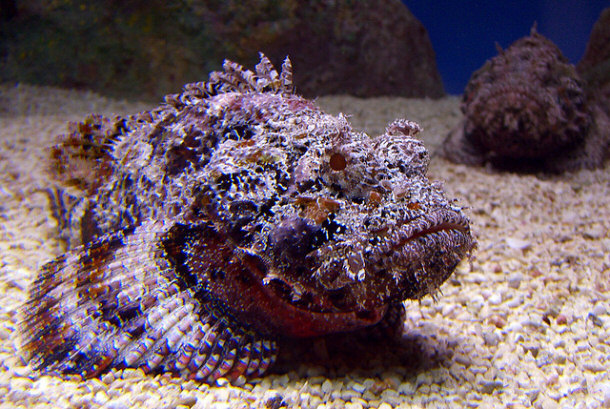
In 2010 there was an influx of stone fish related deaths. One of the deaths
included an 18 year old male and took place at Horseshoe Bay. The young male was
snorkeling and accidentally stepped on the stone fish. The venomous spine
punctures the victims skin and transmitted the poison. There were several
attempts to save the boy, but each attempt proved unsuccessful. Another reported
attack took place in Okinawa off of Koki Beach. The victim was 58 years old, and
had been conducting a scuba diving session. The victim was a said to have felt a
sharp pain across on his foot, before losing consciousness. Though there were
attempts to remove the poison, they were unsuccessful and the diver instructor
was pronounced dead shortly thereafter. Throughout 2010, stone fish accounted
for around 30 cases of death from marine life.
8) Black Mamba
|
Black mamba in defensive posture:
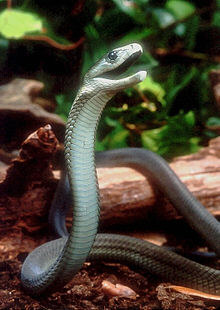
Photo by
Bill Love
|
Black mambas are known for being highly lethally venomous
snakes. Because they are fast, nervous, and extremely aggressive, human
encounters have resulted in many deaths. Black mambas can be found in the rocky
hills or savannahs of Africa. The black mamba can grow up to around 14 feet
long, and can travel at speeds of around 12 miles an hour. If the black mamba
begins to feel threatened, they will raise their heads and body off of the
ground and begin to hiss. This is the only warning that they will give off
before striking. The black mamba has also been known to chase after their prey.
In one attack involving a black mamba, a middle aged man was walking past a
place where a black mamba had buried itself. The black mamba, feeling slightly
disturbed, chased after the man and bit into his leg.
Another black mamba attack involved a man who served as a sort of snake
advocate. In December of 2011 Nathan Layton, a student that participated in a
South African safari died less than an hour after being bitten by a black mamba.
While helping to capture the black mamba, Layton was bitten without even
realizing it. About half an hour later, Layton began to experience blurred
vision. Shortly after, Layton collapsed, suffered cardiac arrest, and was
pronounced dead at the scene.
Student Nathan Layton Died From a Black Mamba Bite
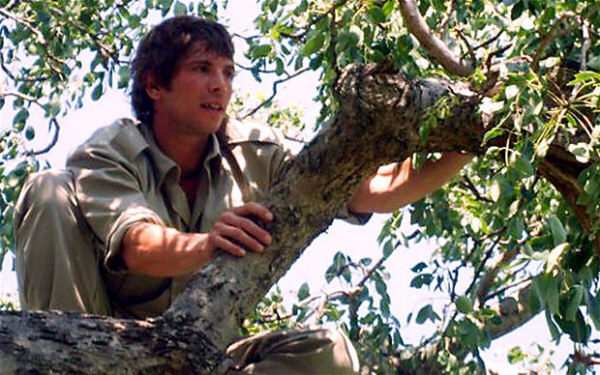
Image curtsey of Enterprise News
7) Cape Buffalo
The cape buffalo is considered to be the most dangerous land
animal in the world. The cape buffalo can measure to about 59 inches, and can
reach weights of about 1,900 pounds. The cape buffalo can survive on all kinds
of grasslands in the sub-Saharan African terrain. The cape buffalo has caused
more human deaths than leopards, lions, elephants, and rhinos. If the cape
buffalo feels threatened or confused, they will likely begin to destroy
everything in sight. They have the ability to reach speeds of up to 35 MPH,
which makes it harder for them to be outrun.
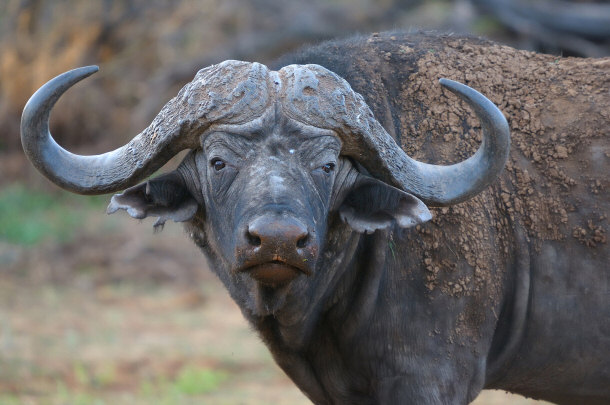
There have been many different cases of attacks on humans by cape buffalos.
One case in particular involved a farmer in his mid thirties who wished to break
in and domesticate the cape buffalo. Though the man gave the task his best try,
he was unsuccessful. In late September of 2010, the farmer made the mistake of
losing his focus while trying to wrangle the cape buffalo. The cape buffalo took
advantage of this distraction and trampled the man to death. Though there were
attempts at saving the farmers life, the attempts were unsuccessful.
6) African Elephant
The largest land animal on earth, the African elephant
is also one of the most aggressive. Reaching heights of about 13 feet, the
African elephant has been known to weigh up to 14,000 pounds. Both male and
females contain larger ivory tusk that can be used as a deadly defense weapon.
Unlike the Asian elephant, the African elephant is not easily controlled or
domesticated. The African elephant has been known to display random bouts of
rage for no apparent reason, but has also been known to become extremely
defensive of their territory.
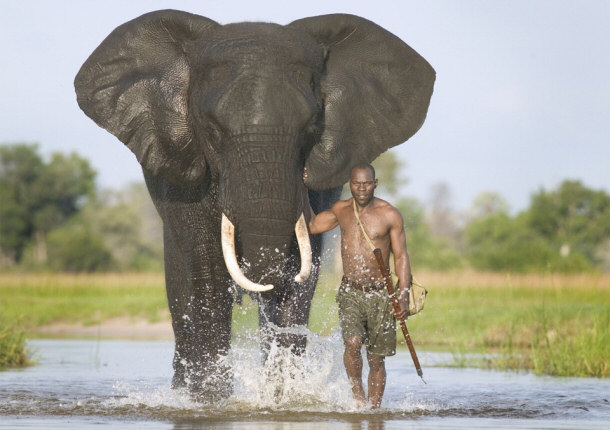
In November of 2011, Lisa Dobson and her husband visited a friend’s private
game farm on the Shashe River. As Lisa walked with her husband and took pictures
of African elephants, she heard the animal begin to trumpet. Lisa’s husband
stepped out in front of her, and the elephant became spooked and started
charging. Lisa was able to get out of the elephants way, but her husband was not
so fortunate. As the commotion died down, and the elephant ran off, Lisa began
to search for her husband. A few of Lisa’s friends finally found her husband
nearby, but it was too late. The African elephant had completely trampled Lisa’s
husband to death.
5) Polar Bear
Known for living in the Arctic ice sheets, polar bears are a
formidable animal. With a possible weight of around 1,6000 pounds, the polar
bear can reach heights of around eight feet tall. Typically the polar bear will
prey on seals, but they have also been known to kill humans. The female polar
bears are extremely protective of their territory, and even more protective of
their young. The males tend to be solitary and provide no help or protection to
the females or cubs. The aggressiveness that the female polar bear can display
on behalf of their young and territory have cost the lives of many humans who
have explored the arctic.
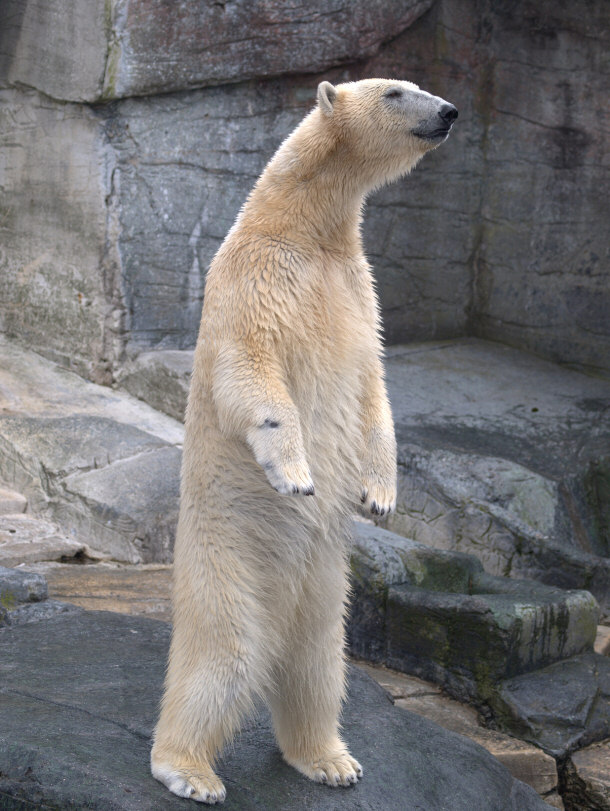
In 2011, a 17 year old boy lost his life in a polar bear attack in Norway.
The 17 year old was camping with the British Schools Exploring Society when the
polar bear entered into the campsite. The bear then proceeded to attack the 17
year old, along with five other campers. Out of the five campers who were
attacked, only three survived the attack. The other two were found mauled beyond
the point of recognition.
4) Box Jellyfish
Normally found in coastal waters, the box jellyfish is
mostly found in Northern Australia. The box Jelly fish can grow to measure up to
10 feet long, while they will weigh about 5 pounds. The average lifespan of the
box jelly fish is less than a year. About 15 tentacles will grow on the box
jelly fish, with each tentacle possessing about 5,000 stinging cells.
School of box jellyfish
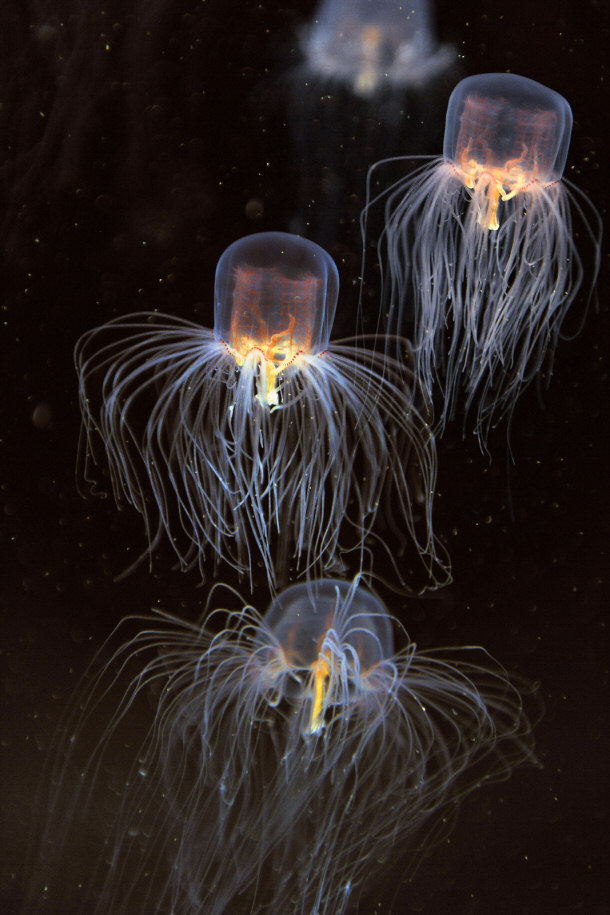
Box jellyfish possess powerful venom that will instantly kill or stun their
prey. This venom that they carry is considered to be some of the deadliest in
the entire world. The toxins in the venom will attack the heart, skin cells, and
nervous system. In most cases, a human that is stung by a box jelly fish will
cause the human to go into shock and drown, or they will die of heart failure.
The only creature in he world that is not affected by the box jelly fish venom
are the sea turtle. In fact, the sea turtle is the natural predator of the box
jelly fish.
For creatures other than the sea turtle, an encounter with the box jelly fish
would be extremely dangerous. Such was the case in February of 2010, with the
death of a tourist on the Island of Langkawi. During this incident, Varina
Lofgren was stung by a box jellyfish while swimming. The sting from the
jellyfish resulted in her death in a matter of five seconds.
Typical Look of a Box Jelly Fish Attack:

3) African Lion
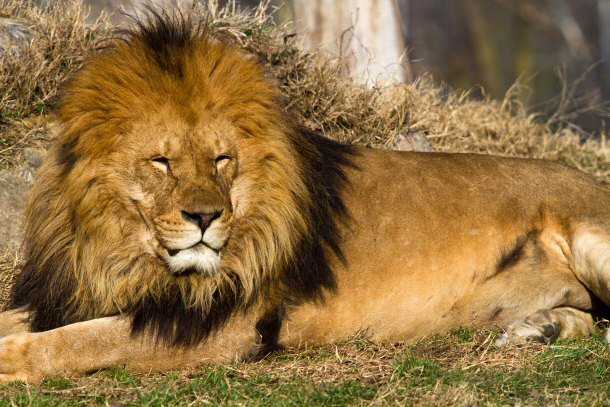
The African lion is found in parts of sub-Saharan Africa,
and live in groups that are known as prides. The prides are a type of family
unit that can include around three males, about twelve females, and their
offspring. African lions can grow to measure about 40 inches, and weigh in at
265 to 420 pounds. The males are defenders of the pride’s territory, which can
extend up to 100 square miles. The males will mark the entire area with their
urine, chase off encroaching animals, and will roar at any intruders. The
females serve as the primary hunters of the pride. The females often use hunting
methods that involve a great amount of teamwork. Their instincts as a natural
predator are apparent just by watching them. Unfortunately there are some humans
who feel like these predators would do well in a captive, controlled
environment. These ideas of control often lead to injury or death for the humans
who wish to tame these wild animals.
One example of this would be when 24 year old Diana Hanson was killed by a
five year old African lion that was kept in a cage. According to Diana’s father
and others, the day that Diana was killed started off like any other. Diana
showed up at the Cat Haven Sanctuary to perform her intern duties. While it is
unclear what exactly Diana was doing in the lion’s cage, it is clear that normal
levels of caution were disregarded. As the lion attacked Diane, her co-workers
and friends could only watch in horror. Some tried to distract the lion, but to
no avail. By the time the paramedics arrived, Diana was already dead.
Diana Hanson Killed by an African Lion
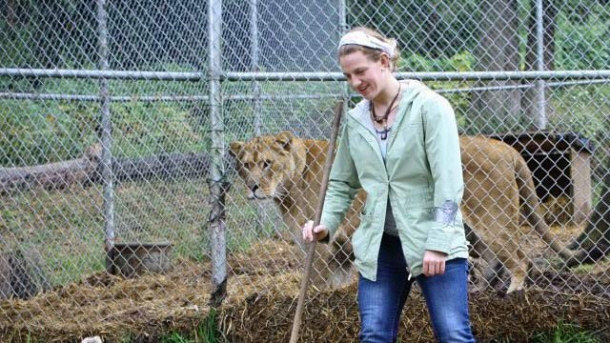
2) Saltwater Crocodile
The largest living crocodile would be the saltwater
crocodile. Weighing in at around 1,000 pounds, and measuring up to 17 feet, the
saltwater crocodile is the animal that is most likely to eat a human. The
saltwater crocodile is a classic predator. In most cases, the crocodile will
wait just below the water’s surface to see if a potential prey will come to the
waters. The salt water crocodile is not a picky eater, and will eat anything
from water buffalo to sharks. Once their prey is in sight, the saltwater
crocodile will grasp their victim and pull it under the surface.
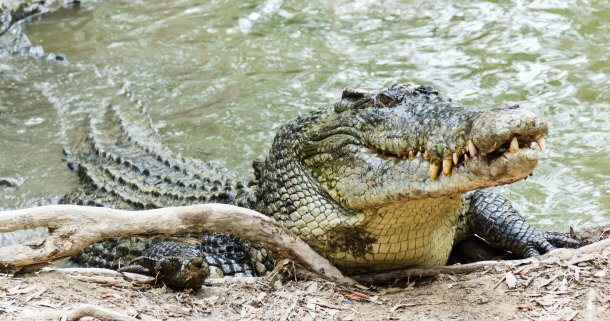
These hunting techniques have been seen many times in attacks that involve
humans. In December of 2012, a seven year old boy was swimming in the waterways
of Northern Australia. As the young boy swam, a saltwater crocodile spotted him.
The saltwater crocodile grabbed the small boy, and swam off with him in his
mouth. Though the boy’s party attempted to rescue him, their attempts were
fruitless. These types of attacks are becoming increasingly common in the
Australian waterways. The sea water creatures are protected in Northern
Australia, so their presence has increased quite steadily.
1) Leopard

Found in Northeast Africa, Central Asia, China, and India, the
Leopard is a powerful cat that is somewhat related to jaguars, tigers, and
lions. The leopard can measure up to six and a half feet, and have been known to
weigh around 170 pounds. The leopard has strong skills in trees, and will often
haul it’s kill up into trees. Leopards will also use the trees in their method
of hunting. Once the leopard is in the tree they will use it as a method of
camouflage, and a way to better spot their prey. Leopards are also strong
swimmers, and have no issues hunting for fish or crabs.
Leopards usually prefer to live alone and will often become very territorial.
These traits will show through in most aspects of their life, including hunting,
living, and social interactions. Their preference for solitary living, however,
does not mean that they are scared of populated areas. Leopards have also been
known to actively seek out humans to hunt, and have been caught in local
villages. In one case in particular, a leopard entered in to a house and dragged
a four year old boy away from his house. The little boy had been playing inside
of his house when the leopard had found him. The police and local volunteers
sent out a search party for the boy. The police and volunteers search until late
that evening when they found the boy’s body.
There was a leopard attack shot on camera in India:
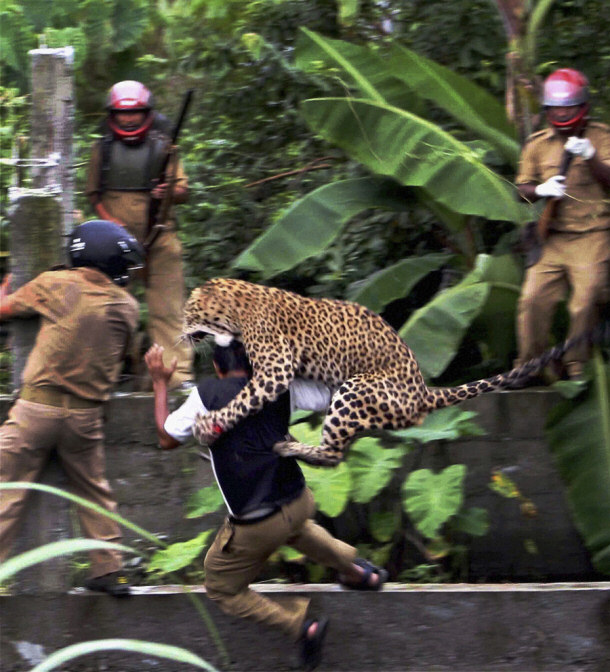
NOTE:
There were many other gruesome photos from this leopard attack that I don't
think I should put up here!
Final Words
These animal encounters prove that there should always be a high level of
caution when you expect to encounter a wild animal. When you find yourself in a
situation involving a wild animal, it is important to remember a few things.
First, just because an animal is beautiful, doesn’t mean that it isn’t deadly.
Even the most adorable animals have the ability to cause some real damage to a
human. You also need to remember that, compared to most animals, humans are
quite fragile. In most cases, all it would take is the wrong move or a bite from
an animal and your life could be over. It is also important to remember that no
wild animal can ever truly be trained. When you disregard the possible threats
of a wild animal it will likely end in tragedy. To avoid a deadly attack from
occurring, you should always keep your distance and use extreme amounts of
caution when near a wild animal.
Nature
Top Lists:
15 Fascinating Facts about the Amazon Rainforest
15 Remarkable Facts About Bacteria
15 Remarkable Facts About Jellyfish
15 Little Known Facts About Elephants
15 Fascinating Facts about Earthquakes
15 Odd And Interesting Facts about Monkeys
Top 15 Myths about Snakes
Top 15 Myths about Horses
Top 15 Creepy Deep Sea Creatures
15 Unexpected Animals That Can Kill You Quickly
Top 15 Spider Myths
15 Beautiful Animals that are Now Extinct
Top 15 Most Amazing Snakes Around the World
15 Fascinating Facts about Snow
Top 15 of the World's Rarest Flowers
10 Most Emotional Animals
15 of the Most Venomous Creatures to Roam the Earth
15 Unusual Animal Defense Mechanisms
15 Unusual and Less Known Uses of Rocks
15 Unique Forest Creatures Less Known To Man
15 Interesting Facts About Time
15 Unknown Parasites You Never Knew Existed
15 Weird Trees Around The World
15 Wild Animals Deadly to Humans
15 Exotic Insects That Are Harmful & Deadly
15 Ridiculous Uses for Gold
Informational:
Preparing for a Disaster
Proof That We Are What We Are!
What is the Meaning of Life?
The Trend and Challenges Facing the Urban World
Creation Narratives and the Evolution Creationist Debate |